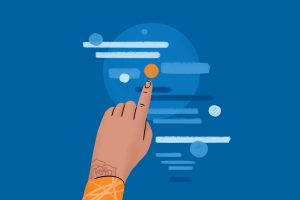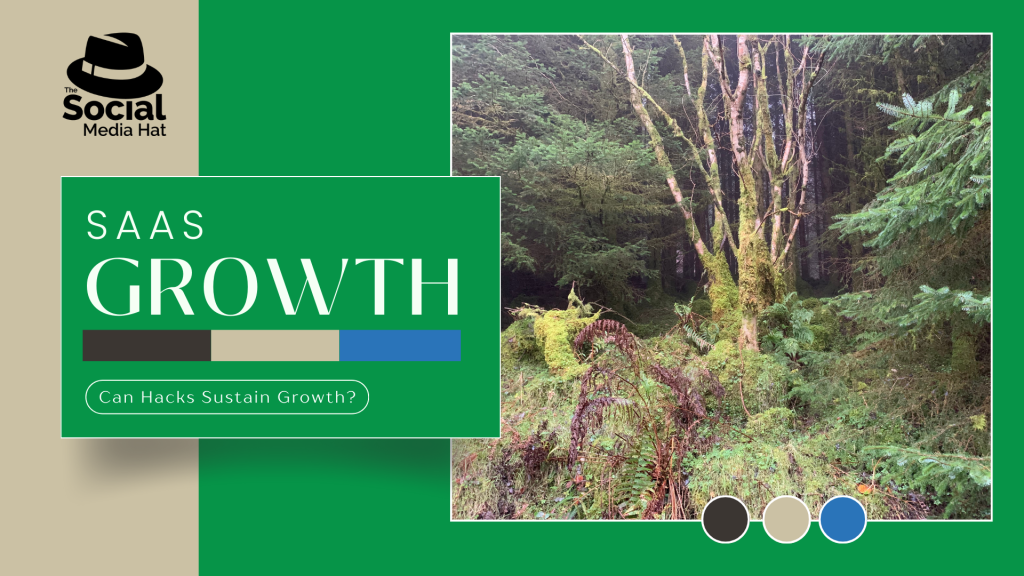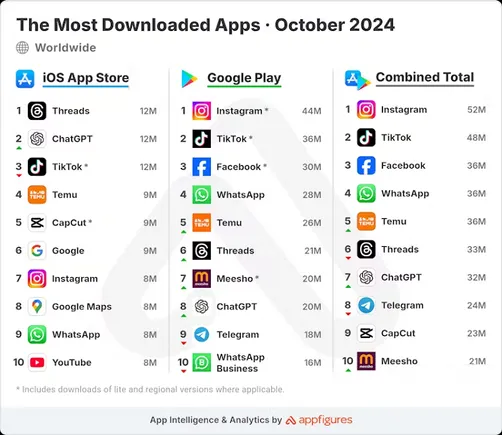Buckle up, kids, it’s time for another history lesson. No, we aren’t visiting ancient Western Europe to learn about SaaS Growth… today, we’re headed to ancient Silicon Valley. Ancient in Internet years, at least.
1996, that is.
In the mid-90’s, the Internet was literally in its infancy. My first email account was allton@osu.edu because Government, Universities, and some businesses were the first and only institutions that had the capability to offer email addresses.
A couple of enterprising entrepreneurs working at Apple and frustrated with the limitation of only having a business email account decided to build their own solution. Hotmail started with just $300k in funding and offered users the very first free, open email system. Anyone could create an account for free and email anyone else.
It’s hard today to imagine how innovative that was!
But, like many SaaS startups, Hotmail struggled to find growth levers that actually worked. The founders pursued conventional marketing tactics like billboard and radio advertising (again, remember this was essentially pre-Internet) and none seemed to be very effective. Until one evening one of the founders suggested automatically inserting a sentence after every outgoing email message every user sent:
‘PS: I love you. Get your free e-mail at Hotmail’
The other founder was concerned at first about the ethics but decided to go ahead – without the ‘P.S. I love you.’ part.
If you’ve heard this story before, you know that it was wildly successful!
Almost instantly they began seeing the coveted hockey stick growth curve. Thousands of users began signing up daily and within six months, they hit a million users. Five weeks later they hit two million users. After 18 months they achieved 12 million users which, at the time, represented over 17% of all Internet users! Microsoft subsequently acquired Hotmail for $400 million.
This is widely considered to be an amazingly successful growth hack and, from a certain perspective, it was. So why did I label it a failure?
When was the last time you heard of or logged into a Hotmail account?
As a company and brand, it basically doesn’t exist any more. Microsoft maintained it for a while, then tried to launch a replacement, enhanced version called Live. And ultimately bundled or replaced everything with Outlook online. There are contributing factors as to why Hotmail failed to sustain growth but the aspect we’re talking about today is the fact that hacks, generally, are not sustainable and scalable.
Let’s talk for a moment about why.
The Pitfalls of Unsustainable Growth Hacks
What was the problem with Hotmail’s growth hack?
Scaling Challenges: Hotmail’s ingenious email tagline yielded explosive growth, but not without challenges. The same hack that worked wonders at a smaller scale became unwieldy as the user base expanded. What initially felt like a stroke of genius turned into a logistical nightmare.
Ethical Considerations: Growth hacks often push ethical boundaries. Hotmail’s ‘PS: I love you’ gambit raised ethical concerns, even leading to its modification. This emphasizes the delicate balance between innovation and ethical integrity, a line that, if crossed, can tarnish a brand’s reputation.
Lack of Sustainability: The meteoric rise of Hotmail was riveting, but it also became a cautionary tale. Growth hacks, if not rooted in a sustainable strategy, can lead to a flash-in-the-pan success story. Hotmail’s eventual decline highlighted the importance of building a foundation for enduring growth.
Changing Landscapes: The digital landscape evolves rapidly. What captivates audiences today might not have the same allure tomorrow. Growth hacks that hinge on trends or temporary tactics risk obsolescence as preferences shift. Offering free email service today clearly cannot have the same impact.
What are some other potential pitfalls?
- Fleeting Success: The Hype Bubble Bursts
- Challenge: Rapid-growth strategies can create a buzz, generating initial excitement and a surge in user numbers.
- Pitfall: Sustaining this momentum proves challenging, as the initial hype often deflates once the novelty wears off.
- Retention Challenges: Beyond the Initial Hook
- Challenge: Users attracted by flashy promotions or one-time incentives may not stick around for the long haul.
- Pitfall: Acquiring users is one thing; retaining them demands a continuous commitment to providing value and meeting evolving needs.
- Value Deficiency: The Core of Sustainable Growth
- Challenge: Some growth hacks focus on acquisition at the expense of delivering genuine, ongoing value.
- Pitfall: Sustainable growth is anchored in consistently meeting user expectations and delivering a product or service that resonates.
- Burnout Risk: The Toll of Non-Stop Sprinting
- Challenge: Unsustainable growth resembles a sprint, often requiring a breakneck pace to maintain momentum.
- Pitfall: The risk of burnout is real, impacting both your team and the sustained effectiveness of your marketing efforts.
Navigating Sustainable Growth: A SaaS Imperative
Sustainable growth in the SaaS realm demands a nuanced approach. Let’s dive into key strategies and considerations tailored to the unique challenges and opportunities of the SaaS landscape.
Building Sustainable SaaS Growth Levers
Sustainable growth levers aren’t quick fixes; they’re the sturdy pillars supporting your SaaS venture’s long-term success. Here’s how you can construct strategies that are as robust as they are enduring:
Strategic Alignment: Your growth initiatives must be more than just flashy tactics. They should be integral parts of your business strategy. Take a step back and ask, “How does this growth plan contribute to our core goals?” Ensure that every move is a step toward building the SaaS empire you envision.
User-Centric Approach: Users are the lifeblood of your SaaS venture. Keep them happy, and they’ll keep coming back. Craft solutions that genuinely make their lives easier. Listen to their feedback, understand their pain points, and let this user-centric approach drive your growth. Happy users become brand ambassadors, driving sustainable, organic growth.
Data-Driven Decision Making: In the age of information, data is your compass. Dive into the numbers to understand what’s working and what needs tweaking. Analytics isn’t just about charts and graphs; it’s about insights that guide your decisions. Let the data be your silent partner in the growth journey.
Agile Adaptation: The business landscape is ever-changing. To achieve sustainable growth, you need to be nimble. Stay on your toes, monitor industry trends, and be ready to pivot when necessary. Adaptation isn’t a one-time thing; it’s a continuous process. Being agile ensures that your growth strategies remain relevant in the face of shifting tides.
Ethical Innovation: Yes, innovation is crucial, but it’s equally important to innovate ethically. Seek solutions that not only push boundaries but also uphold ethical standards. Sustainable growth isn’t just about numbers; it’s about building a brand that people trust. Choose the path of innovation that aligns with values, ensuring that your growth journey leaves a positive impact.
As you navigate the landscape of sustainable growth, remember these principles. They aren’t just checkboxes; they’re the essence of a growth strategy that lasts.
User-Centric Strategies for SaaS Growth
User-centricity isn’t just a buzzword; it’s the guiding principle for sustainable growth. Let’s explore real-world examples of how leading SaaS companies have embraced user-centric strategies to thrive:
Personalized Onboarding Journeys
The moment a user signs up for your SaaS platform marks the beginning of a crucial relationship. Design onboarding experiences that resonate with each user’s unique needs. Understand their goals, offer tailored guidance, and ensure they uncover the full value of your solution from day one.
Take a cue from Zoom, whose onboarding process is tailored to different user needs. Whether you’re a solo entrepreneur or part of a large enterprise, Zoom’s onboarding adapts, ensuring users quickly grasp the features most relevant to them.
Continuous User Feedback Loops
In the SaaS realm, user feedback isn’t just a post-purchase formality—it’s a continuous dialogue. Implement feedback mechanisms within your platform, actively seek user opinions, and iterate based on their insights.
Slack excels in fostering user feedback. Through in-app prompts and dedicated channels, Slack encourages users to share their thoughts. This input directly shapes feature updates, demonstrating the platform’s commitment to meeting user expectations.
Proactive Customer Support
Shift from reactive to proactive customer support. Leverage data analytics to identify potential issues before users encounter them. Reach out to users, address concerns before they escalate, and showcase your commitment to their seamless experience.
Zendesk sets a gold standard in proactive support. By using data to identify potential issues, Zendesk often reaches out to users before problems escalate. This proactive approach not only solves immediate concerns but also strengthens the user-provider relationship.
Community Building
Transform your user base into a thriving community. Create spaces, whether online forums or social media groups, where users can connect, share insights, and support each other.
Salesforce’s Trailblazer Community is a stellar example. Beyond being a support hub, it’s a space for users to connect, share best practices, and even influence the platform’s future through IdeaExchange. Salesforce has transformed users into advocates and contributors.
Value-Driven Feature Updates
Every feature update should translate into enhanced value for your users. Clearly communicate the benefits, focusing on how the new features directly address user pain points or elevate their experience.
Agorapulse strategically introduces features aligned with user needs. Their updates aren’t just about new functionalities but about empowering users to manage their social media presence more efficiently. By clearly articulating the value, Agorapulse keeps users excited about each release.
Predictive Analytics for User Insights
Leverage predictive analytics to anticipate user needs. Analyze user behavior, preferences, and patterns to predict what they might require next. Use this insight to proactively enhance their experience.
Netflix utilizes predictive analytics to recommend content. By analyzing viewing habits, Netflix anticipates user preferences, ensuring a personalized content discovery experience. This predictive approach keeps users engaged and satisfied.
In the SaaS landscape, growth isn’t just about acquiring users; it’s about nurturing relationships that stand the test of time. By centering your strategies around user-centricity, you’re not just growing a user base; you’re cultivating a community invested in the success of your SaaS venture.
Building a Scalable Customer Acquisition Model for SaaS Growth
When aiming for sustainable growth, shift your focus from short-term gains to building a robust customer acquisition model. Leverage a variety of strategies that create a steady influx of engaged users over time.
Inbound Marketing
Inbound marketing centers on attracting potential customers through valuable content, SEO, and a personalized user journey. By aligning your content with user intent, you pull in prospects genuinely interested in your SaaS solution.
Content Marketing
Create and distribute valuable content that educates, entertains, and addresses user pain points. Thoughtful content establishes your brand as an authority and attracts a dedicated audience, contributing to sustainable growth. Learn More
Referral Programs
Encourage satisfied users to become brand advocates through referral programs. Implementing a referral strategy turns your existing user base into active promoters, bringing in new customers who are more likely to stay and engage.
Social Media Marketing
Leverage the power of social media to connect with your audience, showcase your SaaS solution, and foster a community. Engaging content on platforms like LinkedIn, Instgram, and Facebook can amplify your brand’s reach and attract new users. Learn More
Partnerships and Collaborations
Explore partnerships with complementary businesses or influencers in your industry. Collaborative efforts can introduce your SaaS platform to new audiences, creating mutually beneficial growth opportunities. Learn More
Of course Sales and Advertising offer additional growth methods but those come with their own sets of opportunities and challenges that we’ll talk about another time.
By adopting a diverse set of methods, you’re not just acquiring customers; you’re building a community invested in the long-term success of your SaaS platform.
RELATED: From Launch to Scale: The SaaS Marketing Strategy Blueprint
Product Innovation and Adaptability
It bears mentioning here that product innovation isn’t a one-time event—it’s an ongoing commitment. Sustainable growth relies on a SaaS platform’s ability to evolve with changing market dynamics and meet the ever-shifting needs of its users.
Continuous Improvement
Strive for continuous improvement by actively seeking user feedback, monitoring industry trends, and staying ahead of technological advancements. Regularly update your SaaS solution to incorporate new features, enhance user experience, and address emerging challenges.
Customer-Centric Development
Place customers at the center of your product development strategy. Understand their pain points, listen to their suggestions, and implement changes that directly align with their evolving requirements. This customer-centric approach not only retains existing users but also attracts new ones.
Agile Methodology
Adopt agile methodologies in your product development process. An agile approach enables your team to respond swiftly to market changes, reduce time-to-market for new features, and maintain a flexible development environment.
Predictive Analysis
Utilize predictive analysis to anticipate future trends and user demands. By leveraging data-driven insights, you can proactively shape your product roadmap, ensuring your SaaS platform remains relevant and competitive in the long run. This is becoming more and more accessible, and accurate, thanks to AI developments.
Ecosystem Integration
Explore opportunities for ecosystem integration to enhance the overall value of your SaaS solution. Seamless integration with other tools and platforms can make your product more versatile, attracting a wider user base.
Remember, sustainable growth stems from a commitment to innovation and adaptability. Embrace change, listen to your users, and evolve alongside the dynamic SaaS landscape.
Balancing Acquisition Costs with Customer Lifetime Value (CLV)
In the pursuit of sustainable growth, understanding the delicate equilibrium between customer acquisition costs (CAC) and customer lifetime value (CLV) is paramount. While acquiring new customers is essential, it’s equally crucial to ensure that the long-term value they bring justifies the initial investment.
SaaS founders and executives must constantly analyze metrics like New MRR alongside Churn rate and look at specific cohorts of customers. SaaS companies often find that the customers paying the least churn at the highest rate and demand the most resources from your team like Support. This can have an incredible, outsized impact on growth. Here are some considerations:
Strategic Investment for SaaS Growth
Approach customer acquisition as a strategic investment rather than a one-time transaction. Evaluate the potential CLV of acquired customers and tailor your acquisition strategies accordingly. Consider long-term relationships and repeat business as key indicators of success.
Holistic Approach to CLV for SaaS Growth
Take a holistic view of customer lifetime value, considering not only the direct revenue generated but also the potential for upsells, cross-sells, and referrals. A comprehensive understanding of CLV allows for more informed decisions regarding marketing spend and resource allocation.
Retention Strategies for SaaS Growth
Implement robust customer retention strategies to maximize CLV. Building loyalty and satisfaction among existing customers can significantly extend their lifetime value, reducing the need for excessive spending on continuous acquisition efforts.
Segmentation and Targeting for SaaS Growth
Utilize customer segmentation to tailor acquisition strategies based on the potential CLV of different customer groups. By targeting high-value segments more effectively, you can optimize marketing spend and enhance overall ROI.
Data-Driven Decision-Making for SaaS Growth
Leverage data analytics to make informed decisions about customer acquisition and retention. Analyzing customer behavior, preferences, and engagement patterns enables data-driven adjustments to marketing strategies, ensuring a more cost-effective approach.
Lifetime Value Optimization for SaaS Growth
Focus on optimizing customer lifetime value rather than solely fixating on reducing acquisition costs. By consistently delivering value throughout the customer journey, you not only enhance CLV but also create a positive feedback loop for sustainable growth.
Remember, the goal is not just acquiring customers but fostering lasting relationships that contribute significantly to the overall health and sustainability of your SaaS business.
Case Studies of Sustainable SaaS Growth
HubSpot: Transformative Inbound Marketing for SaaS Growth
Approach: HubSpot revolutionized inbound marketing by providing valuable content, tools, and resources to attract, engage, and delight customers. Their customer-centric methodology resulted in sustained growth, turning customers into brand advocates.
Salesforce: Trailblazing Customer Success for SaaS Growth
Approach: Salesforce’s commitment to customer success is legendary. By constantly innovating and adapting to evolving customer needs, they have not only retained clients but expanded their user base globally. Their customer-centric approach fuels long-term relationships.
Atlassian: Agile Product Development for SaaS Growth
Approach: Atlassian’s agile product development and customer-focused solutions have propelled them to sustainable growth. By continuously refining and expanding their product suite based on user feedback, they’ve built a loyal customer base that drives consistent business growth.
Zendesk: Seamless Customer Experience for SaaS Growth
Approach: Zendesk prioritizes a seamless customer experience, offering robust support and communication tools. Their commitment to enhancing customer satisfaction has contributed to enduring growth and a positive brand reputation in the competitive SaaS landscape.
Zoom: User-Centric Communication for SaaS Growth
Approach: Zoom’s meteoric rise is attributed to its user-centric approach, providing a reliable and user-friendly video communication platform. Their dedication to user satisfaction has not only attracted millions of users but has also ensured consistent growth and market leadership.
These case studies illuminate how strategic marketing, innovation, and a customer-first mindset can lead to sustained success in the dynamic SaaS industry. By drawing inspiration from these companies, your startup can navigate the path to growth with resilience and longevity.
Final Thoughts on Sustaining SaaS Growth
As we wrap up this journey into the world of SaaS growth, it’s vital to recognize that sustainable success isn’t a sprint; it’s a marathon. Reflecting on the stories, strategies, and lessons shared, it’s evident that a customer-focused mindset, strategic marketing, and a commitment to innovation are the pillars of enduring growth. Your SaaS venture is not just about acquiring customers; it’s about nurturing lasting relationships. Embrace these principles, adapt as needed, and pave the way for your SaaS brand to stand the test of time.
Ready to turn these insights into action? If your organization has been lacking marketing strategy or you’ve been juggling that duty alongside that of CEO, it’s time to let me wear that CMO hat for you and serve as your Fractional CMO. The Elevate Marketing Framework is more than just a set of principles; it’s a personalized roadmap for your brand’s unique journey. Reach out for a one-on-one consultation and let’s embark on the path to sustained growth together. Elevate your SaaS journey with strategic marketing that stands the test of time.










